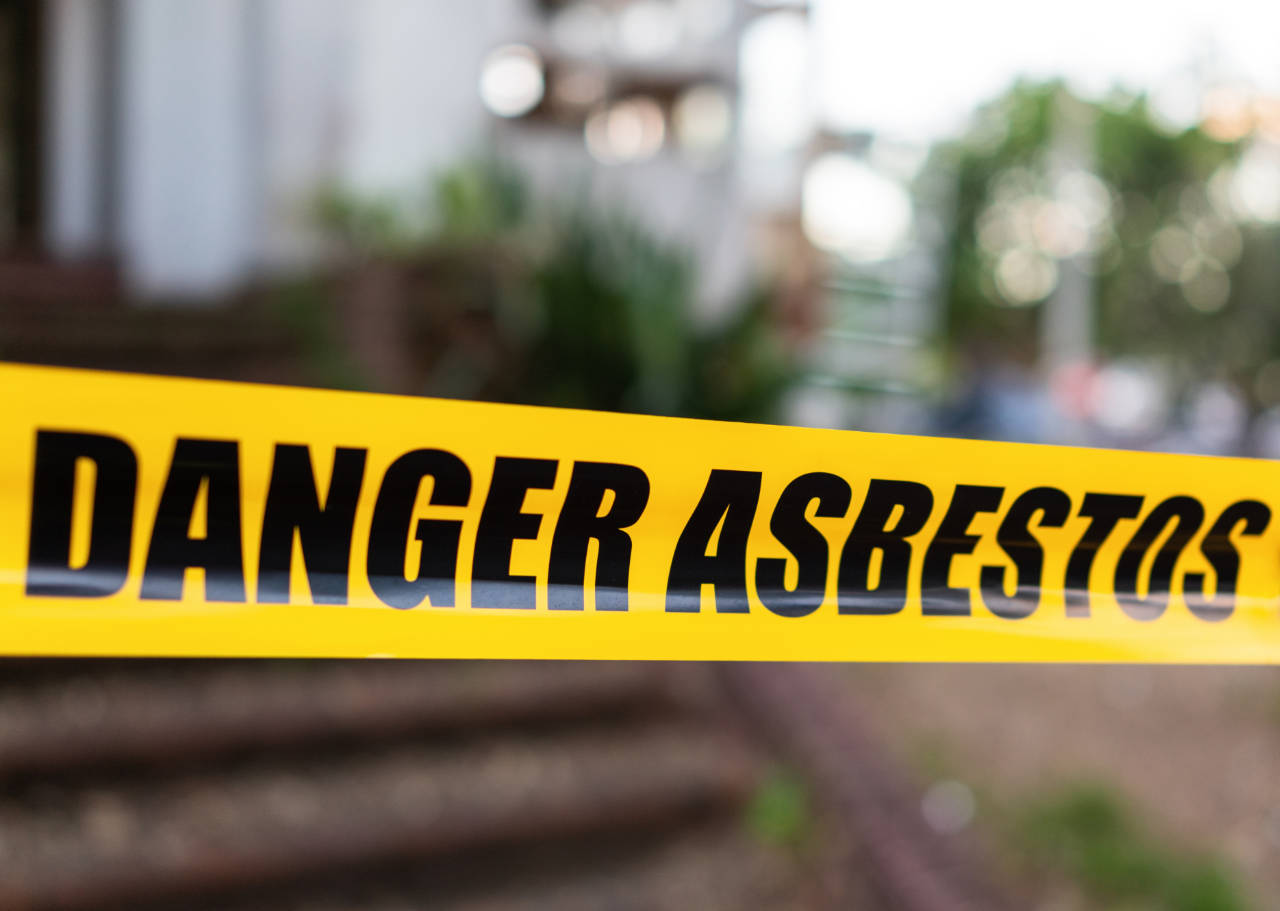
Asbestos was not completely banned in the UK construction industry until 1999, which means it may still be present in buildings constructed before 2000. Asbestos can be found in premises in ceiling tiles, partition walls, fire door panels, fire blankets, vinyl floor tiles and insulation.
If asbestos remains in good condition, well managed and undisturbed, it poses little risk. However, if the material is disturbed or damaged, invisible and harmful fibres can be released into the air and subsequently inhaled.
Here we discuss what asbestos awareness training is, what it covers, and why it is so important.
What does asbestos awareness training teach you?
When selecting an asbestos awareness course, employers should make sure it provides a detailed overview of how to identify asbestos-containing material (ACMs) in the workplace, the health hazards they present, and the steps that need to be taken if a suspected ACM is discovered.
The Health and Safety Executive requires that asbestos awareness training should cover:
- The properties of asbestos and its effects on health, including the increased risk of developing lung cancer for asbestos workers who smoke.
- The types, uses and likely occurrence of asbestos and asbestos materials in buildings and plants.
- The general procedures to deal with an emergency, such as an uncontrolled release of asbestos dust into the workplace.
- How to avoid the risk of asbestos exposure.
This training does not equip individuals to work with asbestos-containing materials, but it helps them understand how to avoid disturbing these materials.
How many modules are in an asbestos awareness course?
The exact number of modules can vary depending on the training provider. Our IATP Approved Asbestos Awareness Training has eight modules:
- What asbestos is, where it comes from and why it is a health risk.
- Asbestos and the body. How asbestos can enter and harm the body.
- Health effects. The health effects of asbestos, potentially fatal diseases, minor accidental exposure and how behaviours such as smoking can increase health risks.
- Where asbestos is found. Where you may encounter asbestos in the workplace, and the different types of ACMs.
- What to do if you discover asbestos. The importance of risk assessments, assessing properties for ACMS, sampling and clearance.
- Managing asbestos. How to manage ACMs.
- Legal requirements. The responsibilities of the duty holder, relevant regulations and delegating activities to employees.
- Asbestos assessment. Why you need to assess, how to plan an assessment and the purpose of an assessment survey, along with types of survey, management and action plans.
Is asbestos awareness training a legal requirement?
Asbestos awareness training is a legal requirement under the Control of Asbestos Regulations 2012.
Employers must ensure that workers who may be exposed to asbestos in the workplace receive appropriate training. This is particularly important for those working in buildings constructed before 2000, as asbestos was not completely banned in the UK construction industry until 1999.
Failure to provide this training can lead to legal action, fines, and increased risk of asbestos exposure.
Why is asbestos awareness training important?
Exposure to asbestos remains the biggest workplace killer in the UK and is responsible for more than 5,000 deaths every year. Diseases resulting from the inhalation of asbestos fibres include mesothelioma, lung cancer and asbestosis. Symptoms can appear between 10 and 50 years after initial exposure.
Asbestos awareness training helps managers, supervisors, and employers understand the risks from ACMs in premises, plant and equipment. The knowledge they gain from the training helps minimise the risk of exposure and reduces potential harm.
Who can deliver asbestos awareness training?
The Health and Safety Executive (HSE) says: “Competent providers of information, instruction and training should have adequate practical experience in the asbestos sector and a theoretical knowledge of all relevant aspects of the work being carried out by the employee.”
An example of an accreditation body is Independent Asbestos Training Providers (IATP), which only lists asbestos training providers that have submitted documentary evidence confirming their compliance with the regulations, including independent external audits where necessary.
The best courses are also approved by the globally recognised Institute of Occupational Safety and Health (IOSH), the world’s largest professional health and safety membership organisation.
Other certifications to look out for include Continuing Professional Development (CPD) which can benefit your employees or contractors you work with by helping them further their careers by improving their skills and knowledge.
Can you do asbestos awareness training online?
With the demands of a modern workplace, selecting an e-learning training provider has many advantages.
The Health and Safety Executive (HSE) says: “Online learning (often referred to as e–learning) is increasingly used as a method of providing asbestos awareness training”.
The HSE recognises the use of e-learning as a viable delivery method, provided it satisfies the requirements of Regulation 10 of the Control of Asbestos Regulations 2012 and the supporting Approved Code of Practice L143 ‘Managing and working with asbestos.”
Online courses allow participants to learn at their own pace by accessing the course on a web browser and pausing, saving and resuming training at any point. This is particularly useful if you have employees and contractors in multiple locations.
E-learning brings benefits to the employer too. An e-learning management system such as SHINE from Praxis42 is a cost-effective tool for compliance record keeping. It allows you to view and manage employee training records easily. Individual training certificates can be printed as proof of compliance for audits, visits from enforcing authorities or for clients that the organisation may undertake work for on their premises.
How long does an asbestos awareness certificate last?
The certificate awarded to successful participants at the end of our IATP Asbestos Awareness course does not expire.
However, it is recommended that refresher training is completed once a year to ensure knowledge and skills remain current.
Regular updates are crucial as regulations and best practices evolve over time.
How long does an asbestos awareness course take?
Our Asbestos Awareness course takes between 25 and 30 minutes to complete.
This online course enables participants to start and stop at their convenience, but the total learning time remains the same.
How to manage asbestos in the workplace
Employers have a legal duty to manage asbestos in their premises, which includes conducting an assessment to identify the presence of ACMs and implementing a management plan to prevent accidental disturbance.
If asbestos is present, it is essential to inform everyone who needs to know, control any work that might disturb it, and display suitable warning signs or labels. Regular training and a clear action plan are vital components of effective asbestos management.
By ensuring that all employees and contractors receive appropriate asbestos awareness training, businesses can minimise the risk of accidental exposure and protect the health and safety of their workforce.

Developed by specialist health and safety consultants, our Asbestos Awareness course is accredited by the IATP and IOSH, delivering effective online training to help your employees identify and recognise the risks from asbestos-containing materials in premises.
To learn more about our Asbestos Awareness training, please visit our website or contact our friendly team on 0203 011 4242 or info@praxis42.com.

Adam Clarke
Managing Director (Consulting)




